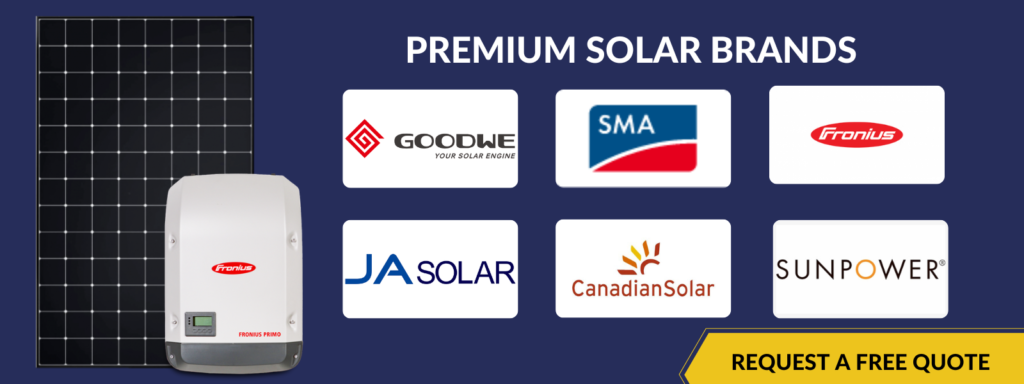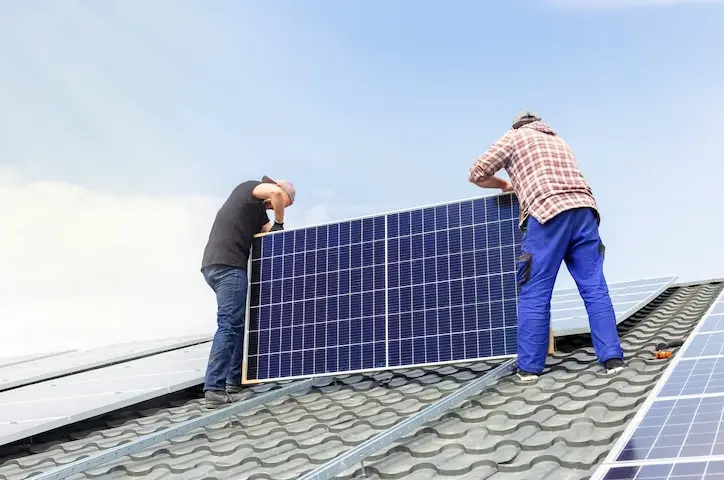Harnessing Solar Power: A Guide to 10kW Solar Systems in Sydney, Australia
Welcome to our comprehensive guide on 10kW solar systems in Sydney, Australia. In recent years, solar power has gained significant momentum as a sustainable and cost-effective energy solution for households and businesses alike. In this blog, we’ll delve into the specifics of 10kW solar systems, exploring their benefits, costs, installation process, and more.
Understanding 10kW Solar Systems:
- What is a 10kW solar system?
A 10kW solar systems comprises solar panels, inverters, and mounting hardware designed to harness sunlight and convert it into electricity. It’s a medium-sized system suitable for homes or businesses looking to offset a significant portion of their energy usage with clean, renewable solar power.
- How much energy can a 10kW system produce?
On average, a 10kW solar system can generate around 40-50 kWh of electricity per day, depending on factors like location, weather conditions, and system efficiency. This translates to approximately 14,600-18,250 kWh of clean energy annually, often enough to power a typical household or small commercial operation.
- Suitable for residential or commercial use?
A 10kW solar system is versatile, making it suitable for both residential and commercial use. For homeowners, it can provide substantial energy savings and reduce reliance on the grid. Similarly, businesses can benefit from lower operating costs and demonstrate a commitment to sustainability by investing in solar power.
Benefits of Installing a 10kW Solar System:
– Reduced electricity bills:
A 10kW solar system can significantly reduce electricity bills by generating clean, renewable energy from sunlight, allowing homeowners and businesses to offset their reliance on grid power and save money in the long run.
– Environmental benefits:
By utilizing solar power, a 10kW system helps reduce carbon emissions and environmental impact, contributing to a cleaner, greener planet and combating climate change through sustainable energy practices.

– Energy independence and resilience:
With a 10kW solar system, individuals and businesses gain greater energy independence by generating their own electricity on-site. This enhances resilience against power outages and grid disruptions, ensuring continuous access to power when needed. – Potential revenue through feed-in tariffs: In regions with feed-in tariff programs, excess solar energy generated by a 10kW system can be fed back into the grid, earning owners financial compensation from energy retailers. This additional revenue stream can help offset initial investment costs and further incentivize solar adoption.
Components of a 10kW Solar System
– Solar panels:
Various types of solar panels, including monocrystalline, polycrystalline, and thin-film, offer different efficiency ratings and durability. Understanding these factors helps in selecting panels that best suit energy needs and withstand environmental conditions for optimal performance and longevity.
– Inverters:
The inverter plays a crucial role in converting DC electricity generated by solar panels into usable AC electricity for appliances. Choosing the right inverter ensures compatibility with the solar array’s size, efficiency, and future expansion plans, maximizing energy yield and system reliability.
– Mounting hardware and racking systems:
Mounting hardware and racking systems provide the structural support necessary to securely install solar panels on rooftops or ground-mounted structures. Factors such as material quality, design flexibility, and installation ease influence system stability, longevity, and overall performance. – Monitoring systems for performance tracking: Monitoring systems allow users to remotely monitor and track the performance of their solar system in real-time. By analyzing data on energy production, consumption, and system health, monitoring systems help identify issues promptly, optimize energy efficiency, and maximize the return on investment over time.
Factors Influencing Cost
– Quality of components:
The quality of components, including solar panels, inverters, and mounting hardware, directly impacts the performance and longevity of a 10kW solar system. Investing in high-quality components ensures reliability, efficiency, and maximum energy output over the system’s lifespan.
– Installation complexity:
The complexity of installing a 10kW solar system varies depending on factors such as roof type, shading, and electrical configuration. Professional installation by experienced technicians ensures proper placement, wiring, and system integration, minimizing installation challenges and ensuring optimal performance.
– Government incentives and rebates:
Government incentives and rebates, such as solar rebates, feed-in tariffs, and renewable energy certificates (RECs), can significantly offset the upfront cost of a 10kW solar system. Understanding and leveraging available incentives can make solar energy more affordable and accelerate the return on investment for homeowners and businesses.
– Location-specific factors:
Location-specific factors, such as solar irradiation levels, weather patterns, and grid connection regulations, influence the energy production and financial viability of a 10kW solar system. Conducting a site assessment and considering local conditions are essential for accurately estimating energy yield and economic benefits.
– Maintenance costs and warranties:
While solar panels typically require minimal maintenance, factors such as cleaning, inspections, and inverter maintenance may incur additional costs over time. Understanding maintenance requirements and warranty coverage for components ensures proper upkeep and protects against unexpected expenses, maximizing the long-term value of the solar investment.

Cost Breakdown of a 10kW Solar System
– Average cost range in Sydney: The average cost of a 10kW solar system in Sydney depending on factors such as component quality, installation complexity, and government incentives. Obtaining quotes from multiple reputable suppliers helps homeowners make informed decisions about their solar investment.
– Comparison of prices from different suppliers and installers: Comparing prices from various suppliers and installers allows homeowners to identify competitive offers and ensure they’re getting the best value for their investment. Factors to consider include component quality, installation expertise, warranty coverage, and customer reviews when evaluating quotes.
– Analysis of long-term savings and return on investment (ROI): Despite the initial investment, a 10kW solar system offers substantial long-term savings and ROI. By generating clean, renewable energy and reducing reliance on grid power, homeowners can offset electricity bills and potentially earn revenue through feed-in tariffs. Calculating the payback period and total savings over the system’s lifespan helps assess the financial benefits of solar adoption.
Choosing the Right Installer
– Importance of selecting a reputable and experienced installer: Choosing a reputable and experienced installer is crucial for ensuring the successful design, installation, and long-term performance of a 10kW solar system. Experienced installers have the expertise to assess site conditions, recommend suitable components, and adhere to industry best practices, minimizing the risk of installation errors and maximizing the system’s efficiency and reliability.
– Factors to consider when comparing quotes: When comparing quotes from different installers, homeowners should consider several factors beyond the upfront cost, including component quality, warranty coverage, installation timeline, and customer reviews. Evaluating these factors holistically helps identify the most cost-effective and reputable option that aligns with specific needs and preferences.
– Questions to ask potential installers: When vetting potential installers, homeowners should ask relevant questions to assess their qualifications, experience, and approach to solar installation. Sample questions include inquiries about licensing and certifications, references from past projects, warranty coverage for components and workmanship, installation process and timeline, and after-sales support services. Additionally, requesting a detailed breakdown of costs and a customized system design proposal helps ensure transparency and clarity throughout the installation process.
10kW Solar System Installation Process
– Site assessment and design: Before installation, a thorough site assessment is conducted to evaluate factors such as roof orientation, shading, structural integrity, and electrical capacity. Based on this assessment, a customized system design is created to optimize solar panel placement, maximize energy production, and ensure compatibility with local regulations and aesthetic considerations.
– Permitting and approvals: Obtaining necessary permits and approvals from local authorities is an essential step in the solar installation process. This involves submitting detailed plans and documentation to ensure compliance with building codes, zoning regulations, and utility interconnection requirements. Experienced installers manage the permitting process efficiently, minimizing delays and ensuring a smooth installation timeline.
– Panel installation and wiring: Once permits are secured, solar panels are installed on the roof or ground-mounted structure according to the approved design. This involves mounting the panels securely, connecting them with wiring to the inverter, and integrating the system with the electrical panel. Professional installation ensures proper alignment, wiring, and weatherproofing to maximize system performance and longevity.
– Connection to the grid and commissioning: After panel installation, the system is connected to the electrical grid through the inverter and metering equipment. This process involves coordinating with the local utility company to finalize interconnection agreements and ensure compliance with safety and regulatory standards. Once connected, the system undergoes commissioning, where it is tested and optimized for performance, ensuring it operates safely and efficiently.

Financing Options
– Cash purchase vs. solar loans vs. leasing options: Homeowners have various financing options when investing in a 10kW solar system. Cash purchase involves paying upfront for the system, while solar loans allow spreading the cost over time with interest. Leasing options involve renting the system and paying a monthly fee.
– Pros and cons of each financing method: Cash purchase offers immediate ownership, maximizing long-term savings and incentives, but requires significant upfront investment. Solar loans provide flexibility with manageable monthly payments and ownership benefits but may incur interest costs. Leasing options require little to no upfront cost but offer limited savings and control over the system.
– Tips for choosing the right financing option for your budget: Consider factors such as upfront cost, long-term savings, ownership benefits, and financial flexibility when choosing a financing option. Evaluate your budget, financial goals, and preferences to determine the most suitable option. Compare financing terms, interest rates, and incentives from multiple providers to make an informed decision aligned with your financial situation and energy needs.
Conclusion
Investing in a 10kW solar system in Sydney offers numerous benefits, from reducing electricity bills to contributing to a cleaner environment. By understanding the costs, components, and installation process, you can make an informed decision that aligns with your energy needs and budget. Ready to harness the power of the sun? Contact a reputable solar installer today to start your journey towards energy independence.

